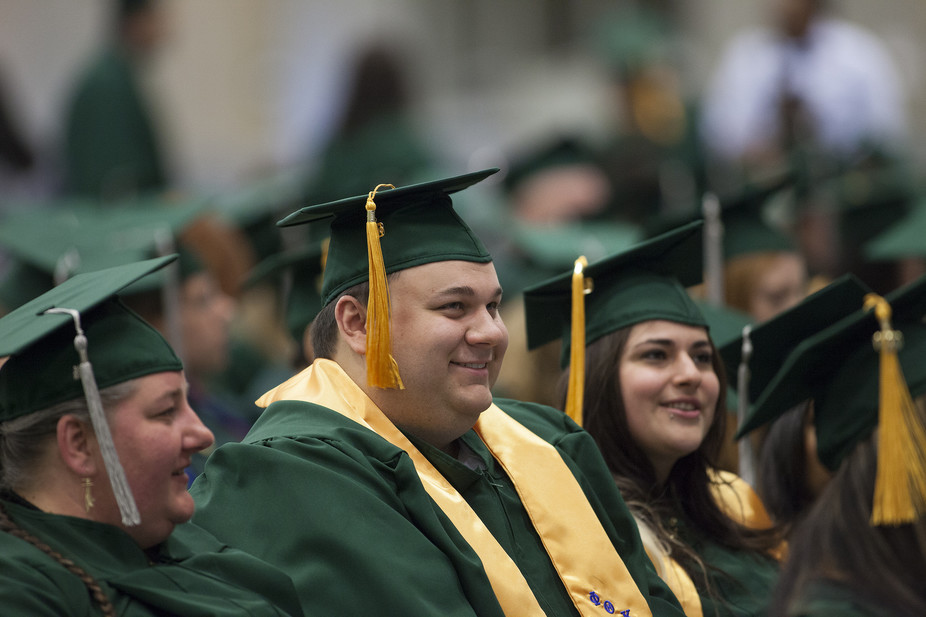Why debt-free college will not solve the real problems in America’s higher education system

David H. Feldman, College of William & Mary and Robert B. Archibald, College of William & Mary
On July 6, Hillary Clinton took a half-step toward Bernie Sanders’ free public college tuition plan. She proposed partnering with states to zero out tuition by 2020 for families making US$125,000 or less.
We know that American higher education faces serious long-term problems. However, reducing tuition or college debt to zero isn’t the right way to solve them.
We have been studying America’s higher education system and college costs. Our research tells us that the deep problems in American higher education today aren’t due to the fact that students borrow or pay tuition. It is because the schools serving the bulk of America’s underprivileged students are increasingly resource-starved.
So, what should our candidates be worrying about when it comes to higher education? And what policies might make a dent in our real problems?
Inequality in higher education
Let’s first look at how higher education has been split into separate and unequal worlds.
As researchers Caroline Hoxby and Sarah Turner have shown, students who attend a college ranked “most competitive” by Barron’s, a financial magazine, enjoy $27,000 of instructional spending per student. These include schools such as Yale, Duke, Kenyon and the University of Miami. At a “non-selective” four-year university that number drops to $5,000. This group includes many non-flagship state universities and small liberal arts colleges that accept most applicants.
The divide is further deepened as only a small percentage of low-income students are able to attend top universities. Only four percent of the students who attend the institutions rated as “most competitive” are from the bottom quarter of the socioeconomic status distribution. Students from the bottom half of the income distribution cluster at community colleges and non-selective four-year institutions.
Rising income inequality and declining state support for higher education further risks cementing in place this division between first class and steerage class education.
Rising inequality, declining state support
Consider the following facts: Most of the income growth since 1965 has gone to the richest 20 percent of American households. Since 2000, a household at the bottom fifth has lost $3,200, measured in 2014 dollars, or 13 percent of its income. But America’s richest five percent earns an extra $7,000.

U.S. household Income from 1967 to 2013. David Feldman, Author provided
For students from poor and middle-income families, stagnant or declining income is a real barrier to college access unless state or federal subsidies become more liberal.
But most states have cut funding to public universities. Between 2000-01 and 2014-15, annual state spending per full-time student fell by $2,573, measured in 2014 dollars. Over the same time period the annual tuition and fees paid by the average student at a public four-year university have risen by $2,038, also measured in 2014 dollars. Tuition increases have not fully recovered state cuts.
Despite tuition increases, public universities, and especially the less-selective non-flagships that serve the bulk of the population, are increasingly resource-starved.
Our calculations, based on data from the Delta Cost Project,which conducts research on how colleges spend their money, show the following: In 1987, public universities spent 88 cents for every dollar that private nonprofit institutions spent on the wages and salaries that drive instruction. By 1999 the ratio had fallen to 81 cents. And by 2010, it had fallen further, to 73 cents on the dollar.
This has consequences. Economists John Bound, Michael Lovenheim and Sarah Turner have found that falling graduation rates, especially among young men, are concentrated at resource-starved community colleges and less-selective public universities.
These researchers found that increases in the student/faculty ratio were the main culprit in declining graduation rates at public universities. This is driven by lack of resources. At community colleges, weaker student preparation is the problem, and this is a consequence of poverty.
What are candidates saying?
But these are not the issues that worry our candidates most. College debt has grabbed the headlines, so college debt has grabbed their attention.

Donald Trump. Joshua Roberts/Reuters
Donald Trump’s website currently contains nothing about higher education. But his campaign co-chair, Sam Clovis, recently offered the outlines of a Trump position. Among the proposals is that government should get out of the loan business – handing it back to private banks.
What would that mean for high school students, who have no collateral and no credit record? Banks generally will not lend money to 18-year-olds with nebulous plans, absent a guarantee. Clovis suggested the guarantee would come from colleges and universities, who would have to pay for student default. Their “skin” would be in the game.
In fact, Trump’s program would hand private banks a financial windfall, because they would earn the fees and interest, and if a student failed to keep up on payments, someone else would take the hit. In Trump’s world, those would be the schools that currently work with large numbers of “risky” underprivileged students.
Hillary Clinton’s platform contains a $25 billion fund to support private nonprofit colleges that serve underprivileged students. This would be, in our view, a step in the right direction if it could pass through Congress.
What we know about student debt
The substantive proposal in Clinton’s New College Compact is the following:
Every student should have the option to graduate from a public college or university in their state without taking on any student debt.
Our point is there is no good reason why debt should be off the table. Substantial gains go to the students who earn a degree, and reasonable amounts of debt are a good way to finance any long-run investment. Students who borrow near the average levels ($25,000 to $32,000), and who graduate, tend to have little difficulty paying back.

A demonstrator holds up a sign to protest student debt. Andrew Burton/Reuters
As Sandy Baum of the Urban Institute, a Washington, D.C.-based think tank, has shown, most of the “extreme” debt is concentrated in two places. The first is graduate students. The returns to their degrees are larger and less uncertain.
A doctor with $160,000 in debt is in much better shape than a dropout who has $14,000 to pay. Most of the dropouts come from under-resourced schools that serve our most at-risk students – this is a problem that worsens inequality.
The second is the for-profit sector. Although for-profits account for only nine percent of degrees awarded, they are responsible for a quarter of the total number of students whose debt exceeds $50,000. For-profits serve a lot of older students and many veterans using GI benefits.
What needs to change
In our view, two reforms could help break the trend toward inequality in the American higher education system.
The first is related to the federal government’s need-based Pell Grants of up to $5,815 per academic year. Pell Grants, which are awarded to low-income, undergraduate students, do not have to be repaid. So, they reduce the price of a year in college.
In today’s dollars, the current maximum Pell Grant has slightly less purchasing power than it did in 1978.
Yet the cost of services – which includes everything from restaurant meals and haircuts to dental care and higher education – has risen faster than the inflation rate. As a result, a Pell Grant covers a declining portion of the cost of a year in college. The maximum Pell Grant covered 94 percent of the tuition and fees at a public university in 2000-01. By 2015-16 it covered only 61 percent. Congress could set the Pell maximum simply by tying increases to an index of service prices.
The second reform that we suggest is a federal program to encourage states to raise their own investment in public universities. Former Democratic Senator Tom Harkin proposed giving states a federal grant based on how much funding they provided per student at their own public universities.
In Harkin’s proposal, states would qualify for a grant if they spent at least $2,865 per student annually. States that offered more funding of their own could get a bigger grant per student from the federal government.
The advantage of Harkin’s bill was that it did not propose to micromanage how the grant would be used. States could use it to hold down tuition growth, but they could also use it to improve the quality of the programming to help underprivileged students. Those are the students who currently fail in large numbers at underfunded public institutions.
We believe these two ideas alone could be a down payment on a fairer higher education system. These ideas would help funnel more resources into the colleges and universities that educate the vast majority of America’s at-risk student population.
![]()
David H. Feldman, Professor of Economics, College of William & Mary and Robert B. Archibald, Professor of Economics, College of William & Mary
This article was originally published on The Conversation. Read the original article.




